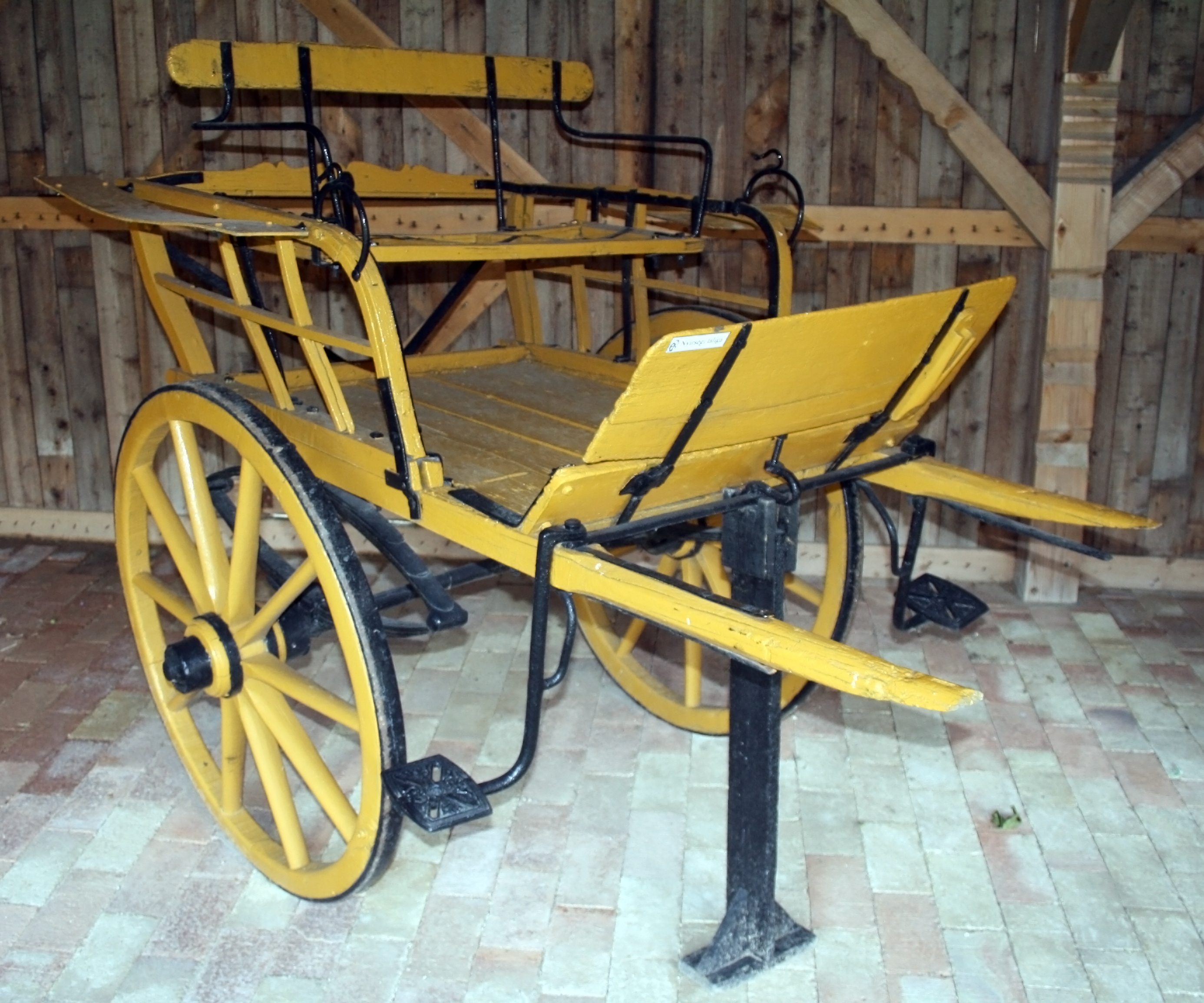Gig (carriage) on:
[Wikipedia]
[Google]
[Amazon]
 A gig, also called chair or
A gig, also called chair or
Gigs, Cabriolets and Curricles.
{{Webarchive, url=https://web.archive.org/web/20120302165719/http://www.janeausten.co.uk/gigs-cabriolets-and-curricles/ , date=2012-03-02 Jane Austen Centre Bath UK England. Animal-powered vehicles Carriages Carts
chaise
A one-horse chaise
A three-wheeled "Handchaise", Germany, around 1900, designed to be pushed by a person
A chaise, sometimes called chay or shay, is a light two- or four-wheeled traveling or pleasure carriage for one or two people with a folding ...
, is a light, two-wheeled sprung cart
Sprung may refer to:
*Sprung rhythm a poetic rhythm designed to imitate the rhythm of natural speech
* Sprung mass (or sprung weight) the portion of the vehicle's total mass that is supported above the suspension
*Sprung floor, a floor that absorb ...
pulled by one horse.
Description
Gig carts are constructed with the driver's seat sitting higher than the level of the shafts. Traditionally, a gig is more formal than a village cart or a meadowbrook cart, and more comfortable, usually being sprung. A light gig can be used for carriage racing. ''OED
The ''Oxford English Dictionary'' (''OED'') is the first and foundational historical dictionary of the English language, published by Oxford University Press (OUP). It traces the historical development of the English language, providing a co ...
'' gives the date of first known reference to a horse-drawn gig as 1791, and they were ubiquitous by the early 1800s.
There are several types of gig, including:
* ''calesín'': small, one-horse, hooded, a seat behind for the driver, used in the Philippines; diminutive of Spanish ''calesa
A kalesa or calesa is a two-wheeled horse-drawn carriage used in the Philippines. It is commonly vividly painted and decorated. It was a primary mode of public and private transportation during the Spanish colonial era of the Philippines, though ...
''
* '' stanhope'': typically having a high seat and closed back; named after Fitzroy Stanhope, a British clergyman who died in 1864.
* ''stick gig'': lightweight, two-wheeled, for one person
* ''Tilbury (carriage)
A tilbury is a light, open, two-wheeled carriage, with or without a top, developed in the early 19th century by the London firm of Tilbury, coachbuilders in Mount StreetAt South Street, London in about 1820 according to Walrond, Sally: Looking at ...
'', lightweight, two-wheeled,
* ''whiskey
Whisky or whiskey is a type of distilled alcoholic beverage made from fermented grain mash. Various grains (which may be malted) are used for different varieties, including barley, corn, rye, and wheat. Whisky is typically aged in wooden cask ...
'' or ''whisky'': small body that resembles a chair, suspended on leather braces attached to springs
Gigs travelling at night would normally carry two oil lamps with thick glass, known as gig-lamps. This caused the formerly common slang word "giglamps" for "spectacles
Glasses, also known as eyeglasses or spectacles, are vision eyewear, with lenses (clear or tinted) mounted in a frame that holds them in front of a person's eyes, typically utilizing a bridge over the nose and hinged arms (known as temples o ...
".
The meaning of the term 'gig' is transferred from the deprecatory term for a 'flighty girl' and subsequently indicates anything which whirls, or is dangerous or unpredictable. Contemporary literature frequently recounted romantic tales of spills and hairbreadth scrapes from these vehicles, but is equally fulsome on the fearful thrill experienced in driving them.Bradney, J. (2005). The carriage-drive in Humphry Repton's landscapes. Garden History, 31-46.
References
External links
Gigs, Cabriolets and Curricles.
{{Webarchive, url=https://web.archive.org/web/20120302165719/http://www.janeausten.co.uk/gigs-cabriolets-and-curricles/ , date=2012-03-02 Jane Austen Centre Bath UK England. Animal-powered vehicles Carriages Carts